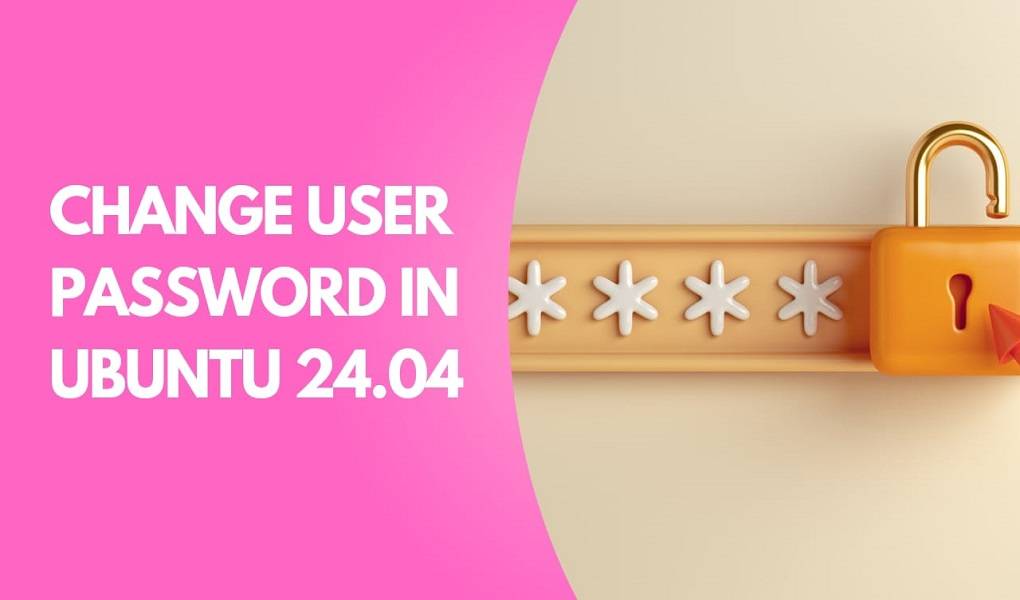Changing user passwords in Ubuntu 24.04 LTS is important for system security. To maintain the integrity and security of your system, make sure that passwords are changed regularly and securely. Passwords can be changed in Ubuntu 24.04 LTS in different ways, including through the graphical user interface and command line. By adhering to best practices for password complexity and implementing regular updates, you can mitigate the risks of unauthorized access and enhance your system’s security against potential threats.
How to Change User Password in Ubuntu 24.04 LTS
In Ubuntu 24.04 LTS, there are several ways to change user passwords, each tailored to the preferences of the user. Whether you prefer the command line for its accuracy, the graphical user interface (GUI) for its visual simplicity, or scripts for automating bulk updates, this guide ensures effective management of user passwords.
- Using the Command Line: Use the passwd command for precise and controlled password changes.
- Using the GUI: Change passwords easily through Ubuntu’s settings interface.
- Automating with Scripts: Use scripts to update multiple passwords at once.
Each method is explained step-by-step to make changing passwords easy and efficient.
Method 1: Changing a User Password Using the Command Line
Changing user passwords via a terminal is an efficient way. You can do it using the following command:
Using passwd
The passwd is a straightforward and high-level command for changing user passwords.
Changing Current User Password:
Step 1: Open the Terminal
To access the terminal, simultaneously press the Ctrl, Alt, and T keys or you can look up “Terminal” in your application menu.
Step 2: Change the User Password
To change your own password, simply type the following command and press Enter:
passwd

Step 3: Enter the New Password
After entering your current password once, you will be prompted to enter a new password twice for verification.

Changing Another User Password:
Step 1: Open the Terminal
To access the terminal, simultaneously press the Ctrl, Alt, and T keys or you can look up “Terminal” in your application menu.
Step 2: Change the User Password
Execute the following command:
sudo passwd username
Substitute the username with the user for which you want to change the password.
![]()
Step 3: Enter the New Password
The new password must be entered when asked. Enter the new password and hit Enter.
To confirm, type the new password once more and hit Enter. By doing this, the password’s updation is guaranteed.

Note:
Make sure the password fulfills the following criteria:
- Minimum of 8 characters
- Features both uppercase and lowercase letters
- Contains at least one number
- Includes at least one special character (e.g., !, @, #, $, etc.)
Method 2: Changing a User Password Utilizing GUI (Graphical User Interface)
For those who prefer a graphical interface, Ubuntu provides an easy way to manage user passwords through its settings. Here’s a step-by-step guide to changing a user password using the GUI.
Step 1: Open Settings
Search for “Settings” in your application menu and open it.
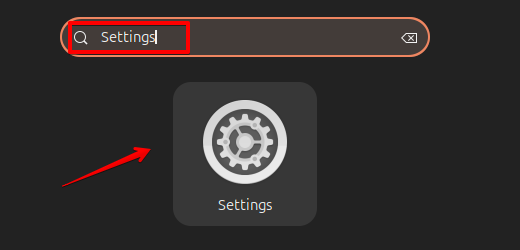
Step 2: Access Users Section
In the Settings window, use the search bar at the top and type “Users.”
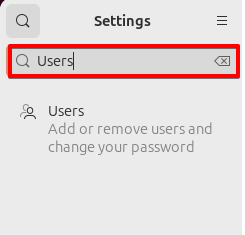
Alternatively, navigate to the bottom of the sidebar and select “System.” Click on “Users” from the options available in the System settings.
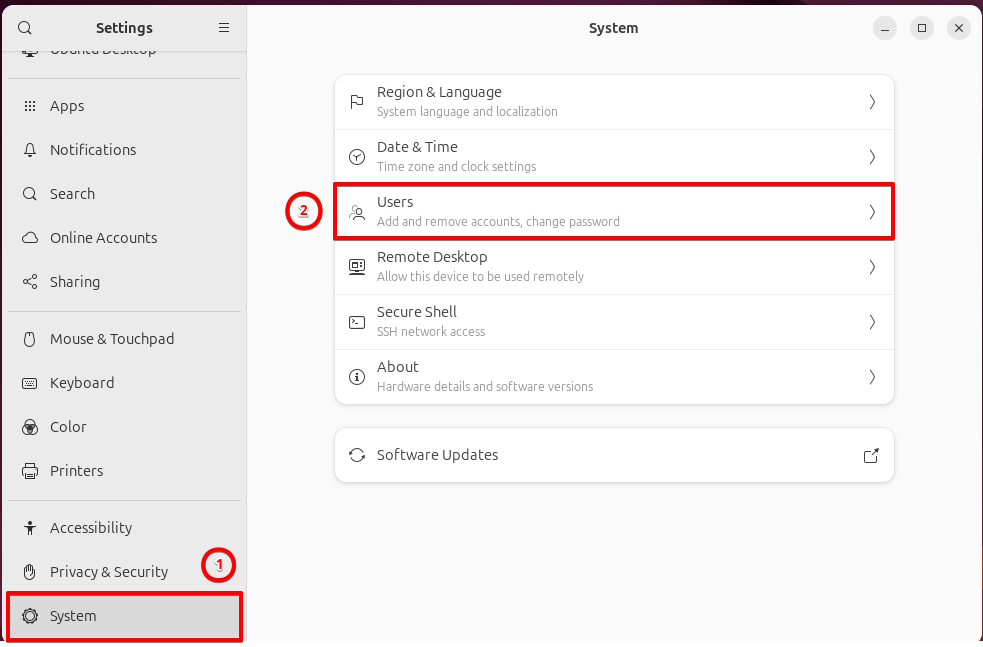
Step 3: Unlock User Management
Select “Unlock” by tapping the button situated in the upper right corner. After providing your administrative password, press “Authenticate.”

Step 4: Select the User
Click on the user account for which you want to change the password. Click the “Password” field.
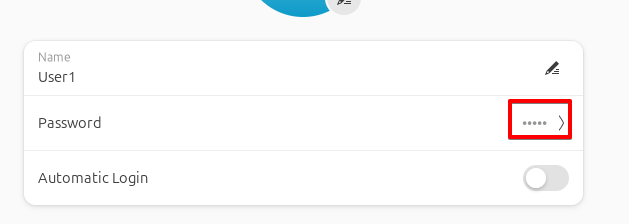
Step 5: Change the Password
Select the “Password” field, type in a new password, confirm it, and then click “Change.”
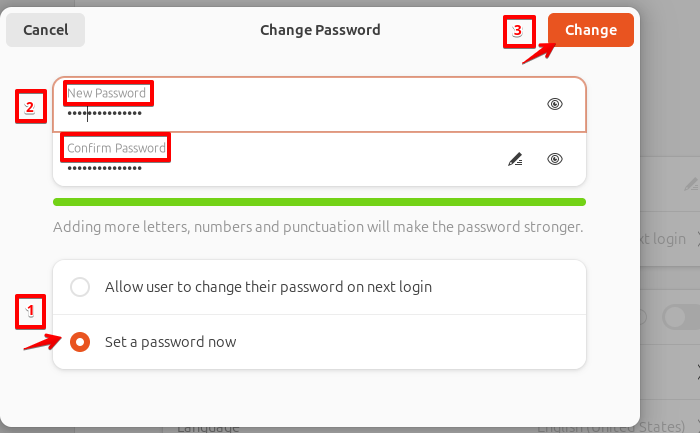
Your password has now been updated.
Method 3: Automating Password Changes with Scripts
Automating password changes can be particularly useful for bulk user management. Here’s how you can use scripts to change passwords efficiently.
Step 1: Open the Terminal
Open the terminal by simultaneously holding down the Ctrl, Alt, and T keys.
Step 2: Create a Script
Use any text editor to write the script. For instance, using nano:
nano change_passwords.sh
Step 3: Add Script Content
Add the following content to the script:
#!/bin/bash echo "username1:newpassword1" | sudo chpasswd echo "username2:newpassword2" | sudo chpasswd
Substitute username1, username2, etc., with the actual usernames you want to change, and newpassword1, newpassword2, etc., with the respective new passwords.
To save your changes, use Ctrl+O then close the text editor by pressing Ctrl+X.

Step 4: Make the Script Executable
Use the chmod command to grant execute permissions to your script.
chmod +x change_passwords.sh
Step 5: Run the Script
Run the script to change the passwords:
./change_passwords.sh
Conclusion
In summary, changing user passwords in Ubuntu 24.04 LTS is significant for maintaining system security. Ubuntu provides multiple methods to change user passwords. The command line offers a quick and efficient way to change passwords, while the graphical user interface (GUI) is available for those who prefer a visual approach. Additionally, scripting is a powerful tool for automating password changes, making it easier to manage several users.
By following the steps outlined in this guide, you can ensure your system remains secure and that passwords are updated regularly and effectively. Keep visiting Linux World.
